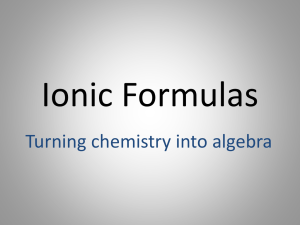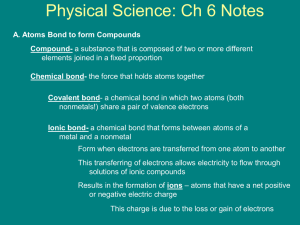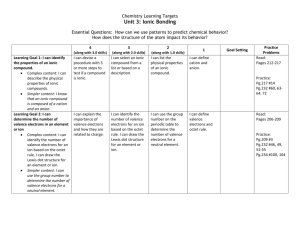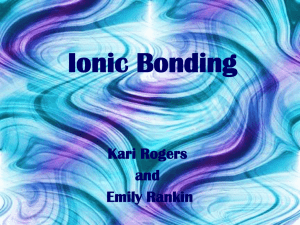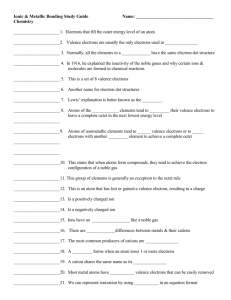Ionic Formulas
advertisement
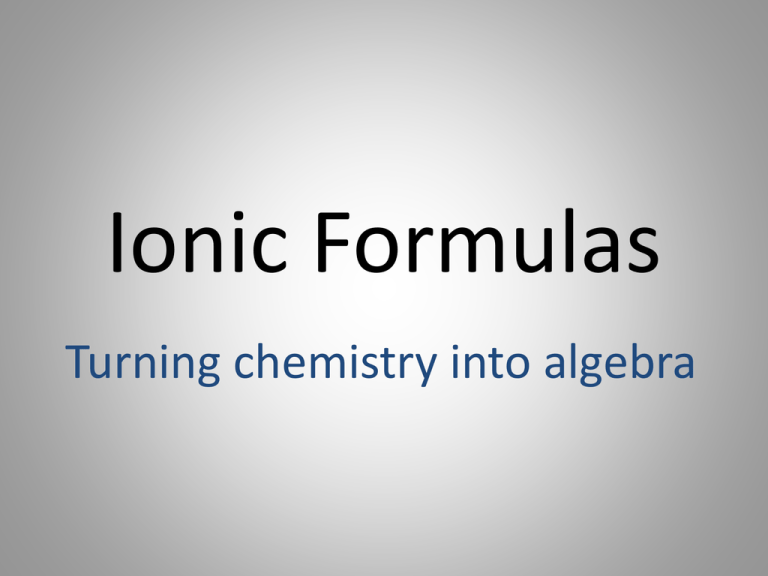
Ionic Formulas Turning chemistry into algebra REVIEW • We can tell how many electrons an atom will gain or lose by looking at its valence electrons. • Metals like to lose electrons. (Cations) – Ex. Na + • Nonmetals like to gain electrons. (Anions) – Ex: O 2- • All elements try to have a full valence of 8 electrons(OCTET RULE). REVIEW • Cation- is a positively charged ion. • How do cations form? – When atoms LOSE electrons they become positive. • Anion- is a negatively charged ion. • How do anions form? – When atoms GAIN electrons they become negative. Chemical Bonding A chemical bond is the force of attraction that holds two atoms together. Cl Na Attractive Force Why do elements form chemical bonds? Atoms form chemical bonds in order to fill their outermost energy level with electrons. • A full valence causes an atom to be more stable. •A full valence consists of 8 valence electrons. Ionic Bonding Ionic bonds: Metal atoms transfer electrons to nonmetal atoms. Producing oppositely charged ions (cation & anion) which attract each other. Na + + Cl- NaCl Write an ionic formula for + − Na bonding with F Balance the charges. Na+ F− (1+) + (1-) = 0 1 Na+ and 1 F− = NaF Write an ionic formula for + 2− K bonding with S Balance the charges. K+ S2− + K 2(1+) + (2-) = 0 2 K+ and 1 S2− = K2S Write an ionic formula for 3+ − Fe bonding with OH Balance the charges. Fe3+ OH− OH− OH− (3+) + 3(1-) = 0 1 Fe3+ and 3 OH− = Fe(OH)3 Write the formula for… an ionic compound composed of: 3+ Al and 2S Al2S3 Write the formula for… an ionic compound composed of: 2+ Fe and SO4 FeSO4 2- Write the formula for… an ionic compound composed of: 2+ Cd and NO2 Cd(NO2)2 - Write the formula for… an ionic compound composed of: + Ag and CO3 Ag2CO3 2- Write the formula for… an ionic compound composed of: 2+ Pb and NO3 Pb(NO3)2 - Write the formula for… an ionic compound composed of: 2+ Hg and PO4 3- Hg3(PO4)2
